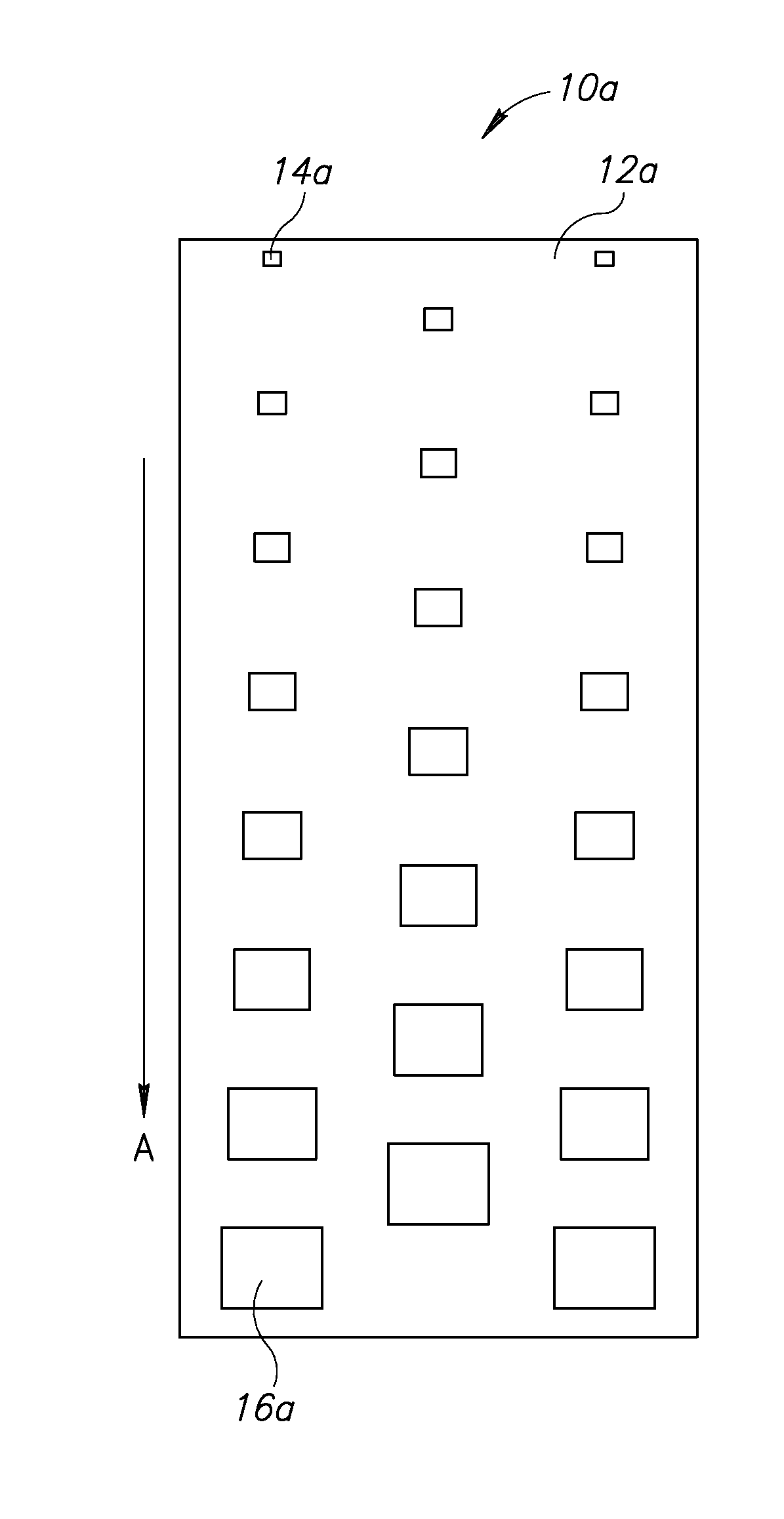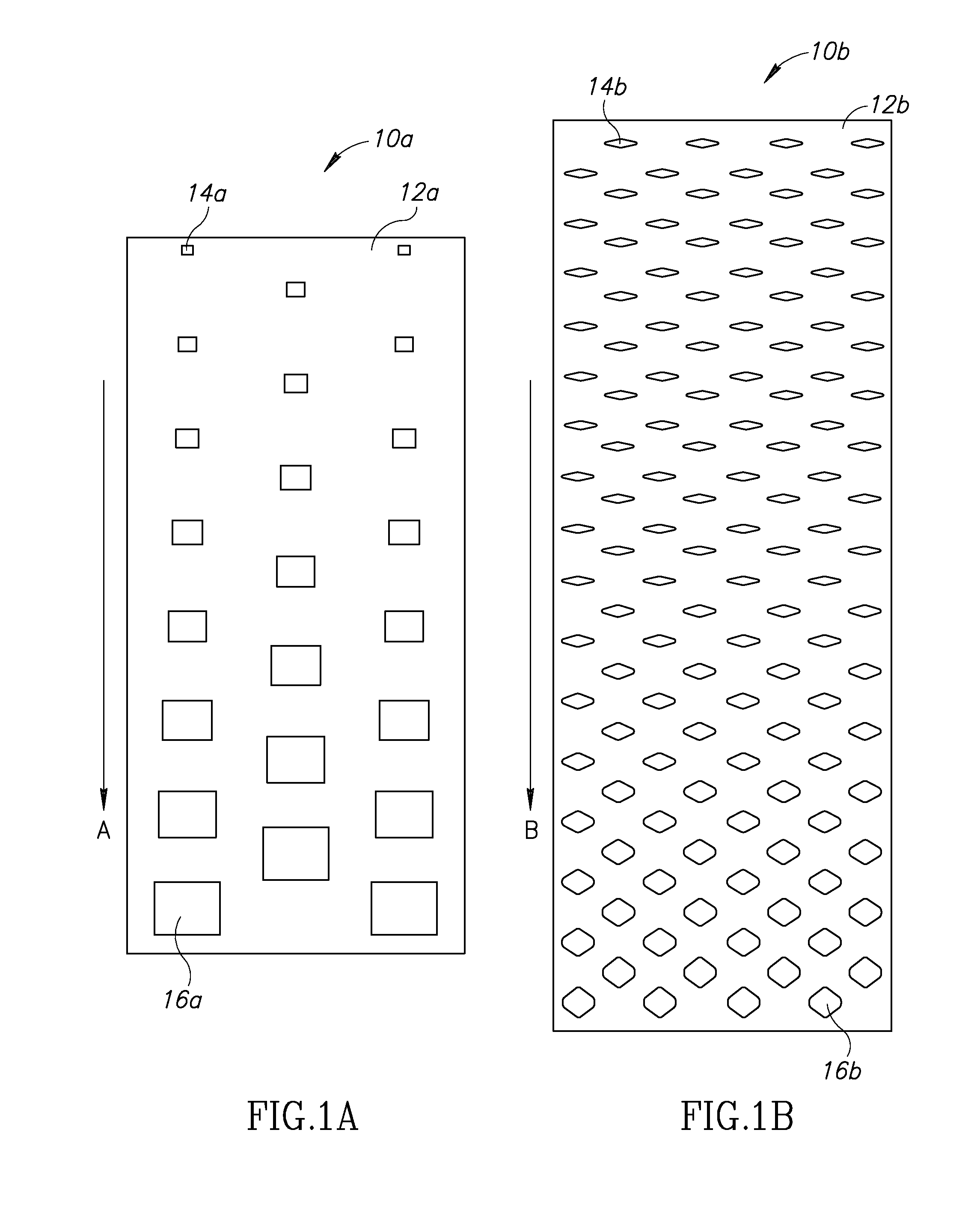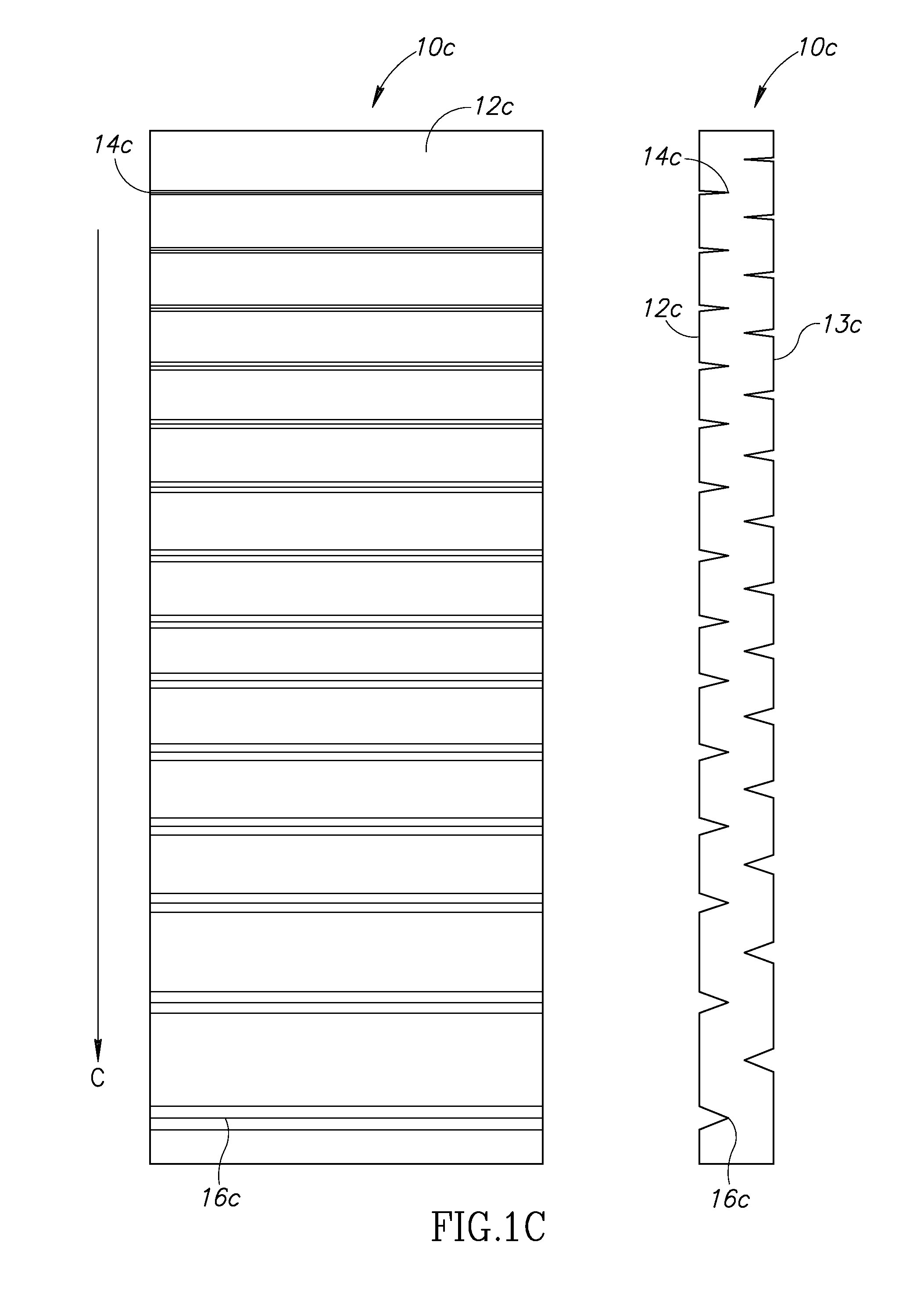Compressible, low-weight insulation material for use in garments
a low-weight insulation material and compressible technology, applied in the field of compressible, low-weight insulation materials with elastic memory, can solve the problems of reducing user performance, affecting the enjoyment of activity, and reducing user performance, so as to relieve or prevent undesirable buildup of heat and moisture, and increase air circulation
- Summary
- Abstract
- Description
- Claims
- Application Information
AI Technical Summary
Benefits of technology
Problems solved by technology
Method used
Image
Examples
Embodiment Construction
[0041]The problem of striking a desirable balance between the weight, insulating properties, and compressibility of an insulating material may be solved by use of a compressible, low-weight insulating material of the present invention, wherein certain portions of an insulating material are removed so as to provide an increased warmth-to-weight ratio and a decreased compression profile relative to the insulating material when fully intact.
In certain embodiments, the insulating material is an elastic insulating material with portions thereof removed such that an insulating property of the elastic insulating material varies with stretching and relaxation of the elastic insulating material.
FIG. 1A depicts a front-elevational view of a compressible, low-weight insulating material 10a of the present invention in a relaxed (i.e., non-stretched) state. A surface 12a of an elastic insulating material defines a plurality of rectangular perforations along a size gradient in the direction of ar...
PUM
| Property | Measurement | Unit |
|---|---|---|
| compressible | aaaaa | aaaaa |
| warmth-to-weight ratio | aaaaa | aaaaa |
| heat transfer | aaaaa | aaaaa |
Abstract
Description
Claims
Application Information
 Login to View More
Login to View More - R&D
- Intellectual Property
- Life Sciences
- Materials
- Tech Scout
- Unparalleled Data Quality
- Higher Quality Content
- 60% Fewer Hallucinations
Browse by: Latest US Patents, China's latest patents, Technical Efficacy Thesaurus, Application Domain, Technology Topic, Popular Technical Reports.
© 2025 PatSnap. All rights reserved.Legal|Privacy policy|Modern Slavery Act Transparency Statement|Sitemap|About US| Contact US: help@patsnap.com



